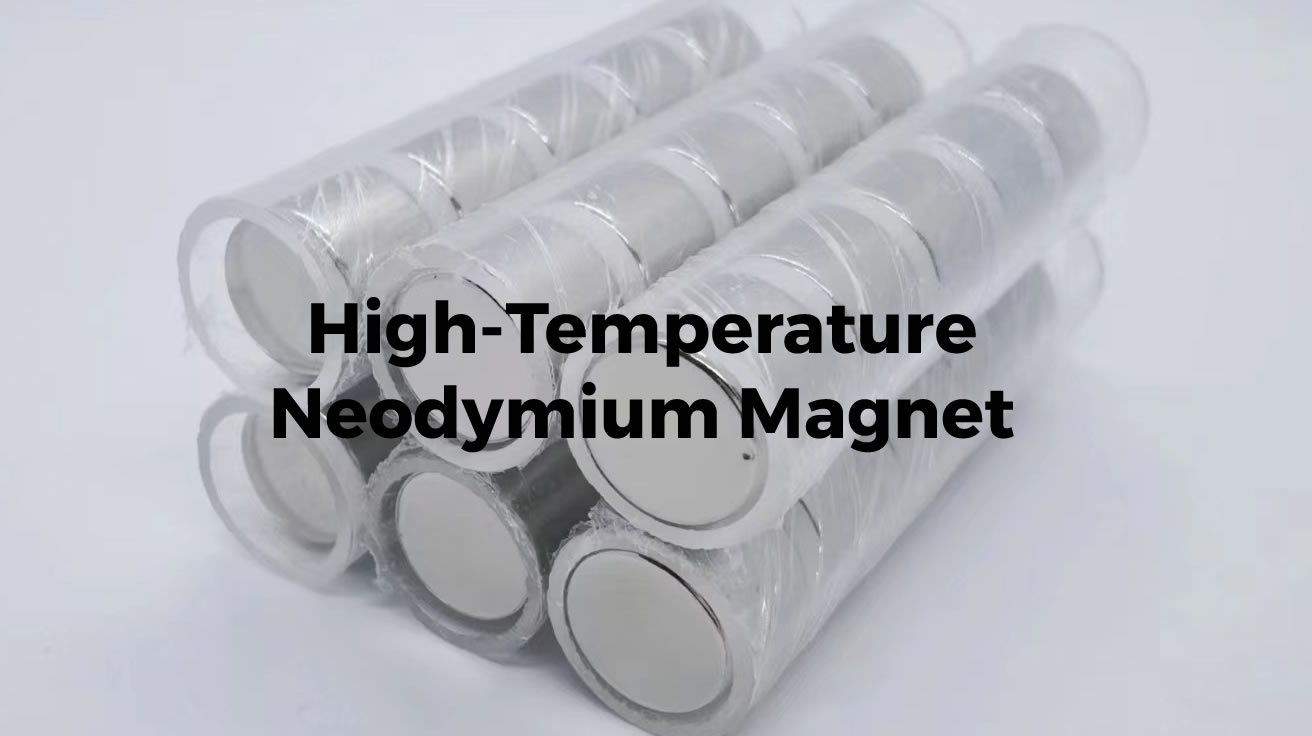What Makes Neodymium Magnets Special?
Neodymium magnets, made from a mix of neodymium, iron, and boron (NdFeB), are the strongest permanent magnets you can find. Known as the “king of magnets,” they pack a punch with a magnetic energy (BHmax) more than 10 times stronger than ferrite magnets. They’re hard, reliable, and don’t break the bank, which is why they’re used in everything from tiny earbuds to huge electric car motors. But what really sets some of them apart? Their ability to stay strong even when things get hot—really hot.
Why High-Temperature Magnets Are a Big Deal
Most magnets lose their power when heated up, but high-temperature neodymium magnets are designed to keep going in tough, scorching conditions. Think about machines like factory drills, wind turbines, or electric vehicle engines—they all generate heat. Regular magnets would weaken or fail, but these special NdFeB magnets are built for the challenge. They’re a game-changer for industries like manufacturing, energy, and transportation.
Temperature Grades: Picking the Right One
Not all neodymium magnets are the same—they come in different “grades” based on how much heat they can handle. Here’s the breakdown:
- M Grade: Up to 80-100°C—good for basic electronics like speakers.
- H Grade: Up to 100-120°C—works for light motors.
- SH Grade: Up to 120-150°C—perfect for brushless motors in tools or cars.
- UH Grade: Up to 150-180°C—great for heavy-duty machines.
- EH Grade: Up to 180-200°C—handles high-heat motors.
- AH Grade: Up to 240°C—the newest, toughest option for extreme conditions.
For example, brushless motors often use SH-grade magnets (120-150°C), while the AH grade shines in places like electric car engines or aerospace parts that hit 240°C.
How Heat Affects These Magnets
Heat can mess with a magnet’s strength. Studies show that for every 1°C increase, neodymium magnets lose about 0.11% of their magnetism. The good news? If you cool them down, most of that power comes back—it’s reversible. But there’s a catch: if the temperature goes way too high, like past 310°C (called the Curie temperature), the magnet can lose its power forever. That’s why matching the grade to the job is so important.
The Amazing AH Series: A Heatproof Breakthrough
The AH series is the latest star in the neodymium family, with grades like N30AH, N33AH, N35AH, and N38AH. These magnets can handle up to 240°C—way more than the older EH grade’s 200°C. Recently made available for commercial use, they’re perfect for super-hot environments. Imagine an electric car motor or a plane engine—the AH series keeps them running strong. Even better? They’re a cheaper alternative to samarium-cobalt magnets, which can take 250°C but cost a lot more. The AH series is shaking things up by offering high performance at a lower price.
Where You’ll See High-Temperature Neodymium Magnets
These magnets are hard at work in all kinds of hot places:
- Automotive: Electric and hybrid car motors, sensors, and alternators often hit 120-150°C or more. The AH series is a top pick here.
- Renewable Energy: Wind turbines and solar systems heat up when they run—magnets like these keep them spinning.
- Medical Tech: MRI machines and surgical tools need magnets that can handle sterilization heat up to 200°C.
- Aerospace: Plane and spacecraft parts face wild temperature swings—AH-grade magnets are up to the task at 240°C.
- Factories: Pumps, welding gear, and furnaces run hot all day, and these magnets keep them going.
Real-World Examples
Picture this: a wind turbine spinning fast in the sun, generating power for a town. Its magnets need to stay strong despite the heat. Or think about an electric car zooming down the highway—its motor relies on AH-grade magnets to keep pushing forward, even on the hottest days. These magnets aren’t just tech—they’re making our world cleaner and faster.
Challenges to Watch For
Neodymium magnets are awesome, but they’re not perfect. They’re super reactive, meaning they can rust or corrode easily. To fix this, they get coated with stuff like zinc (Zn), nickel (Ni), or special layers like electrophoresis or passivation. Without these coatings, they’d wear out fast, especially in damp or harsh spots. Another hiccup? If you only need a small batch of AH-grade magnets, some factories might not make them because they don’t keep the materials on hand for tiny orders.
Why They’re Worth It
High-temperature neodymium magnets are strong, affordable, and tough enough for the hottest jobs. Their mechanical strength—hard and stable—makes them reliable, and their cost beats out pricier options like samarium-cobalt. The AH series takes it up a notch, opening doors for new inventions that need to work at 240°C. Whether it’s powering a car or a wind farm, these magnets deliver.
Looking Ahead
As industries push for greener tech—like electric vehicles and renewable energy—high-temperature neodymium magnets will play a bigger role. Researchers are even working on making them handle more heat, which could lead to exciting new uses. For now, they’re a solid choice for anyone needing power that doesn’t quit, no matter how hot it gets.






